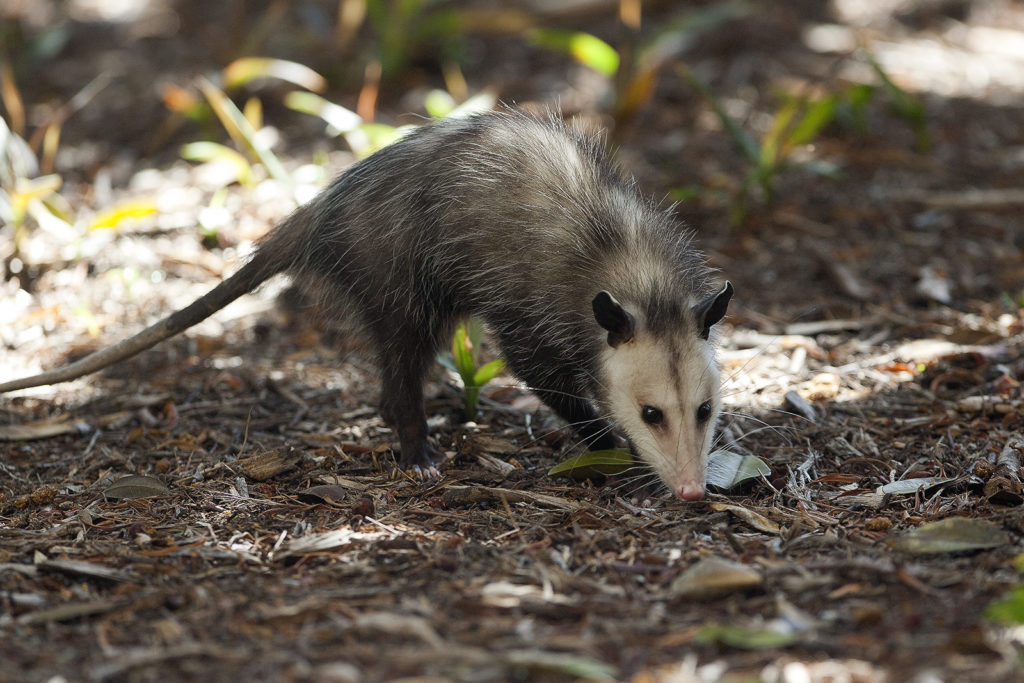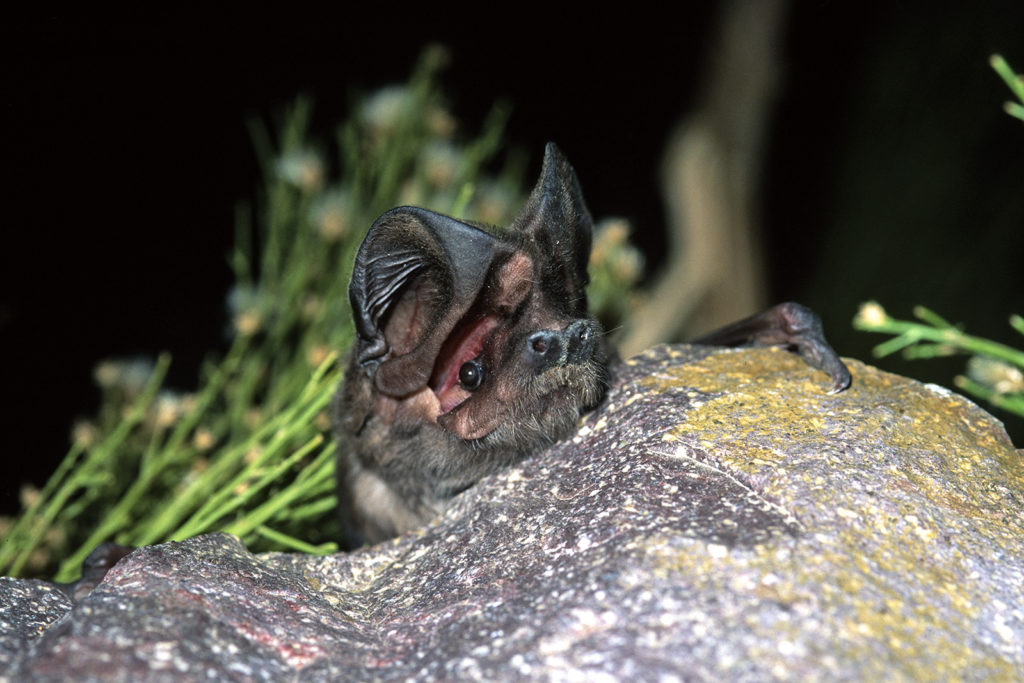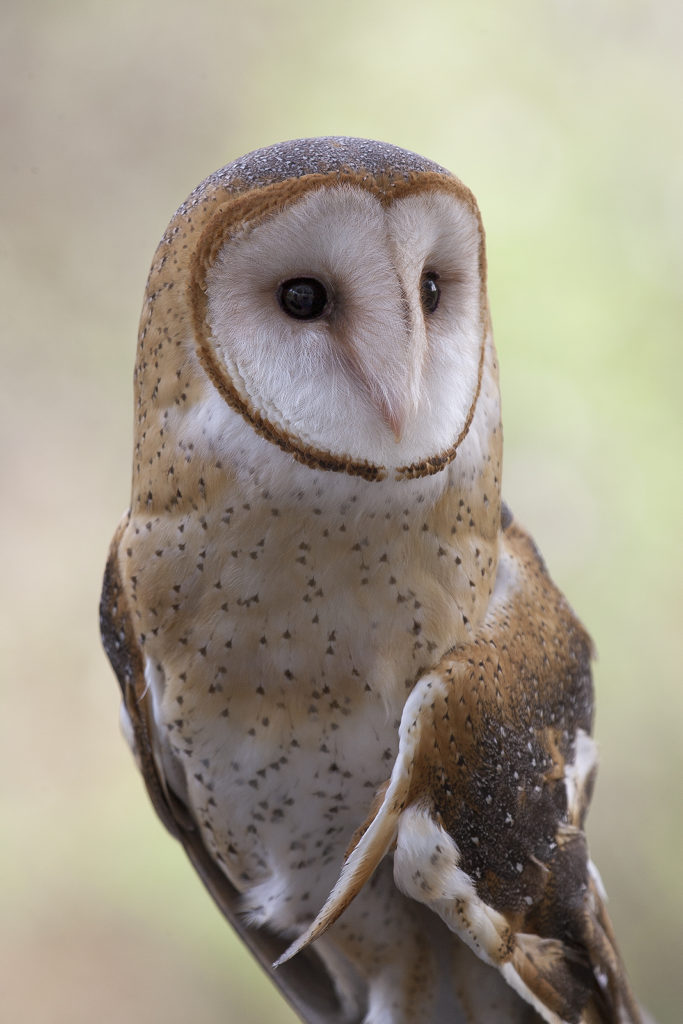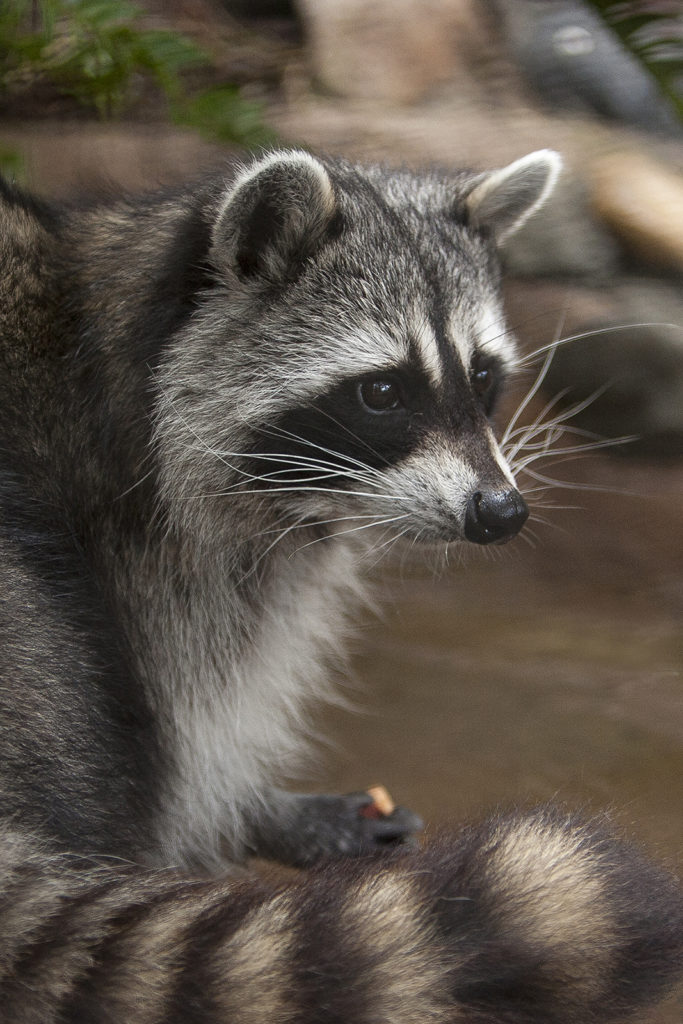
While most of us are tucked in our beds tossing and dreaming, some animals rouse from their slumber and slip into the night to find food, mates, or both. The cover of darkness is useful in dodging predators and lessening competition for resources. With Winter Solstice upon us on December 21, bringing with it the shortest day and longest night of the year, it’s the perfect time to reconnect with our nocturnal friends in Southern California, from skunks to bobcats, who toil beneath the stars to tidy up and keep things in check for us diurnal creatures. While it may be startling to run across nighttime wildlife, it’s important to respect their niche, give them space, and let them take care of business.

One of the most common nocturnal neighborhood creatures is the opossum. Often maligned—blame its hairless tail and pointy snout—this creature is the only marsupial surviving in North America. Youngsters develop in the mother’s pouch until they are big enough to ride on her back and accompany her on dining adventures. These animals are crucial to slowing the spread of diseases, including debilitating Lyme disease that is transmitted by ticks. Opossums consume vast numbers of these blood-sucking insects—up to 5,000 during tick season—keeping humans (and their dogs and cats) safer. If you see an opossum keeled over, it may be “playing possum” and faking being dead to deter predators. The animal cannot choose when it seizes up and flops to the ground; it is a dramatic stress response so don’t scare them!

San Diego County is home to 23 bat species, 21 of which are insectivores. The other two species rely on nectar for survival, making them important pollinators. None of them want to bite your neck or get stuck in your hair. Insectivore bats use echolocation to find food, emitting sound from their mouth or nose that bounces off a bug (or other object) and allows the bat to hone in on it and nab it midair. Talk about a superpower! Mosquitoes are a favorite meal, so the next time you’re not scratching a bug bite, thank a bat.

You won’t hear them coming, but you may catch a glimpse of these stealthy hunters in action. Barn owls are the most widely distributed owl species, swooping in for rodents scurrying about in open fields. It has excellent low-light vision, but can also locate prey by sound alone. Even rodents looking over their shoulders are not safe from these handsome hunters.

One unmistakable masked “bandit” is the dexterous and fastidious raccoon. Highly intelligent and curious, these animals will go to great lengths to eat just about anything. Locked dumpsters and fastened windows barely slow them down! Athletic, adaptable, and inquisitive, raccoons are also known for washing their food before consuming it (their Latin species name lotor means “the washer”) so they are generally found where water is available. While sometimes considered a pest, raccoons are voracious omnivores consuming plant-based foods like tubers, seeds, berries and nuts but can shift to insects, fish, eggs, carrion, small mammals, mollusks and crustaceans. They don’t mind urban areas, as we leave a lot of edible trash behind.
During our long winter nights, the nocturnal shift of wildlife is still busy cleaning up and keeping diseases at bay for those of us who embrace the sparkle of daylight. Next time you’re out under the stars, take a moment to appreciate the countless unseen creatures that make the world a better place!
Karyl Carmignani is a staff writer for San Diego Zoo Global. Read her recent story Tracking Technology.




